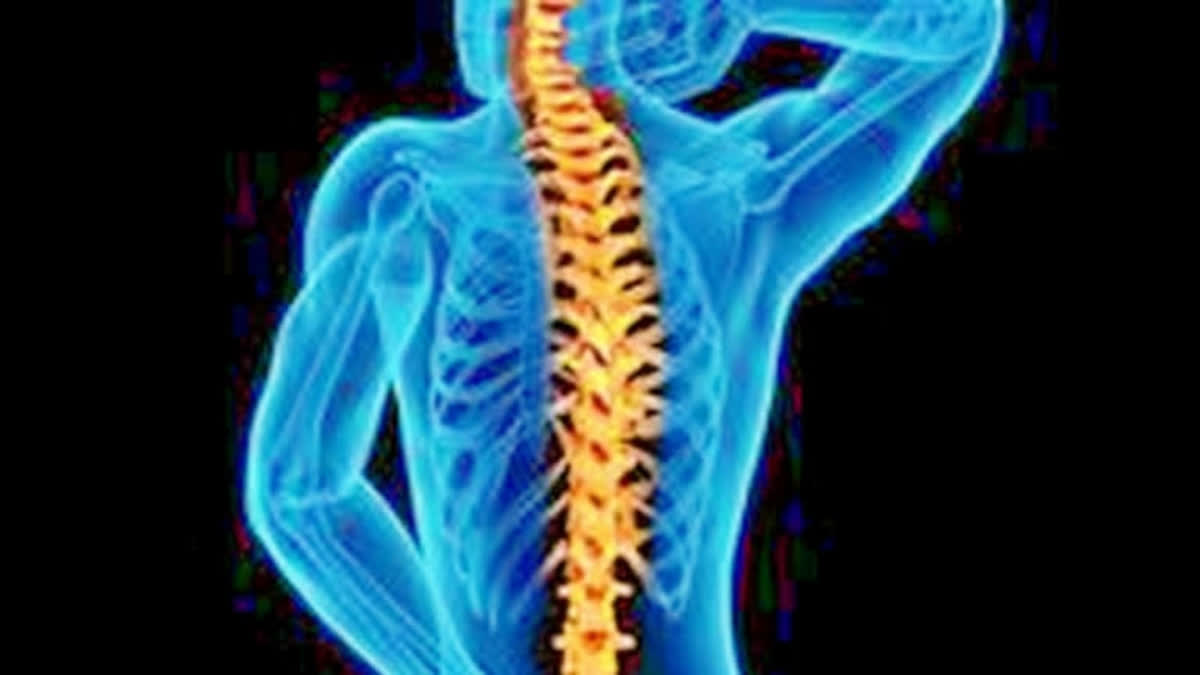New Delhi: Neuroscientists and neurosurgeons have reported in the journal Nature that they have re-established the communication between the brain and spinal cord through a wireless digital bridge, allowing a paralysed person to walk again naturally. "We have created a wireless interface between the brain and the spinal cord using brain-computer interface (BCI) technology that transforms thought into action," summarised Gregoire Courtine, professor of Neuroscience at Swiss Federal Institute of Technology Lausanne (EPFL) and University of Lausanne (UNIL), Switzerland.
Reporting in the journal Nature, the scientists present the situation of Gert-Jan, 40 years old, who suffered a spinal cord injury following a bicycle accident that left him paralysed. The digital bridge enabled him to regain natural control over the movement of his paralysed legs, allowing him to stand, walk, and even climb stairs. Gert-Jan explained that he has recovered the pleasure of being able to share a beer standing at a bar with friends. "This simple pleasure represents a significant change in my life," he says.
To establish this digital bridge, two types of electronic implants are needed, the scientists said. "We have implanted WIMAGINE devices above the region of the brain that is responsible for controlling leg movements," explained neurosurgeon Jocelyne Bloch, who is a professor at UNIL and EPFL.
Also read; Having Alzheimer's genes may increase risk of epilepsy: Study
WIMAGINE devices, developed by The French Alternative Energies and Atomic Energy Commission (CEA), a French public government-funded research organisation, allows to decode the electrical signals generated by the brain when we think about walking, the scientists said. "We also positioned a neurostimulator connected to an electrode array over the region of the spinal cord that controls leg movement," said Bloch.
"Thanks to algorithms based on adaptive artificial intelligence methods, movement intentions are decoded in real time from brain recordings," said Guillaume Charvet, head of the BCI program at CEA. These intentions are then converted into sequences of electrical stimulation of the spinal cord, which in turn activate leg muscles to achieve the desired movement. This digital bridge operates wirelessly, allowing the patient to move around independently.
The researchers also found that rehabilitation supported by the digital bridge enabled Gert-Jan to recover neurological functions that he had lost since his accident. They were able to quantify remarkable improvements in his sensory perceptions and motor skills, even when the digital bridge was switched off. This digital repair of the spinal cord suggested that new nerve connections had developed, they said.
While the digital bridge has only been tested in one person at this stage, Bloch and Courtine explained that in the future, a comparable strategy could be used to restore arm and hand functions. They added that the digital bridge could also be applied to other clinical indications, such as paralysis due to stroke. (PTI)



